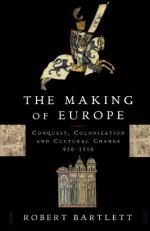|
This section contains 519 words (approx. 2 pages at 300 words per page) |

|
Samuel Bamford was born into a successful weaving family. Both of his parents, as well as other relatives, were cotton weavers. This passage from his memoir paints a happy picture of cottage manufacturing but also reveals how hard this work was. The scene must have occurred in the 1790s; spinning had moved into factories, and women, who previously had been cottage spinners, as well as men were working at handlooms.
Some two or three weeks before Christmas, it was the custom in families to apportion to each boy or girl weaver a certain quantity of work which was to be done ere his or her holidays commenced. An extra quantity was generally undertaken to be performed, and the conditions of the performance were such indulgences and gratuities as were agreeable to the working parties. In most families, a...
|
This section contains 519 words (approx. 2 pages at 300 words per page) |

|




